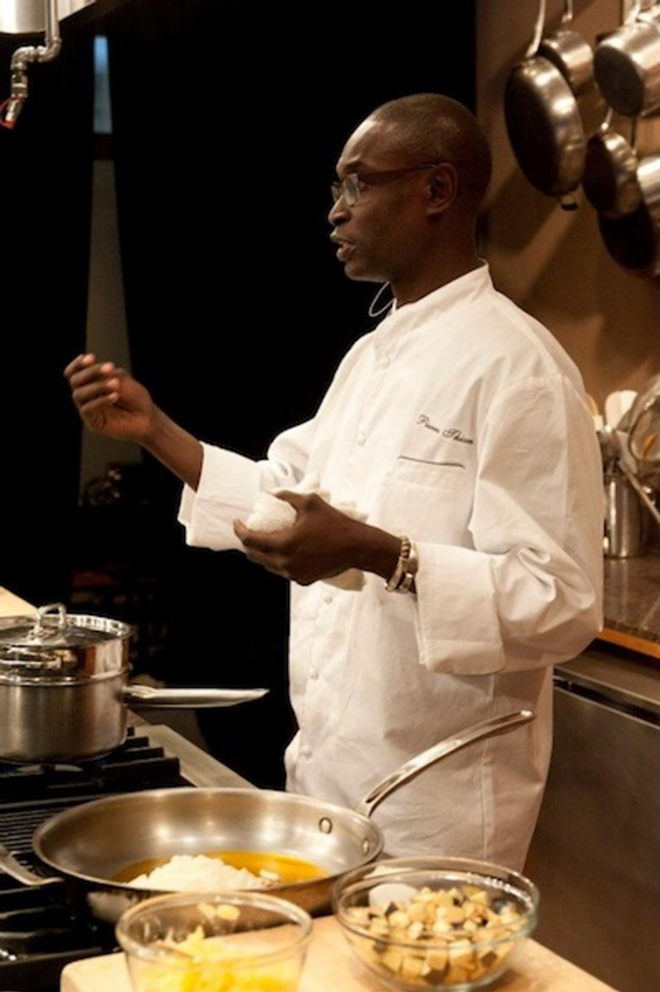When Senegalese Chef Pierre Thiam cooks, it’s not kitchenware he’s concerned with. He doesn’t need the finest knives or most advanced stoves; his most important tools are his hands. His hands establish a direct connection to ingredients, to the history of the cuisine, and to the community he cooks for.
Thiam came to the Museum of Fine Arts in St. Petersburg last week to share the cuisine of his home nation of Senegal. He demonstrated how he prepares a meal and elaborated a bit on West African culture.
To him, the act of eating with your hands, a common tradition in Senegal, is a sort of communion-like act.
“I want people to use their hands because all your senses have to be involved when you are eating,” Thiam said. “You’re missing something major if the feeling is not part of it.”
He learned the importance of community through food while watching his mother and aunts prepare dishes for family and neighbors back home. Meals were always communal, with everyone sitting around a large bowl together.
“Eating together is love, it’s trust,” says Chef Thiam. That’s exactly what sparked his interest.
Thiam arrived in New York from Senegal in the late 1980s. Despite having degrees in physics and chemistry, he worked as a busboy in a Manhattan restaurant. Being around a kitchen flooded him with nostalgia for food from home.
In Senegal, women do the cooking, but in New York he saw male-run kitchens and realized his true passion was food. Without any formal training, Thiam studied great chefs and combined that with his knowledge of Senegalese cooking.
“I became a bookworm and read all the classics on cuisine,” said Chef Thiam. “It became more than a passion, it became a way of life.”
He also used his background with chemistry in organizing ingredients. Eventually, he became executive chef and owner of popular restaurants in New York such as Yolele (his first restaurant), Le Grand Dakar, and now Pierre Thiam Catering.
“He’s not arrogant or cocky like some chefs can be,” said chef Viet Vo, chef instructor to the team of culinary students from the Art Institute of Tampa who assisted in the meals creation. “He’s an incredibly humble guy. He brought class and a new cuisine that was a great opportunity for the students.”
The cooking event served as a tie-in with the current Mixing Metaphors exhibit, which explores visual metaphors in African-American art.
“Cuisine is culture,” Thiam said. “The whole experience is more complete when you involve music and art.”
As he cooked his way through two of the night’s four courses, grouper and yucca croquettes and roasted mango and coconut rice pudding, he emphasized the importance of community in cooking, a view that resonated with his team of budding chefs as well as the guests.
“Community is the most important,” said Vo. “It builds a better environment and a better place to live.”
That sentiment carried over to Thiam’s selection of ingredients as well. He opted to substitute the salmon in one recipe for grouper for its locality and freshness.
Based on traditional Senegalese recipes featured in his book Yolele! (Lake Isle Press, 2008), Thiam’s food exploded with flavor and life. He passed a plate to an eager diner and reminded everyone why he does this: teranga, a Senegalese word that translates to “hospitality.”
It means sharing through history, community, and humility. And of course, eating with your hands.


